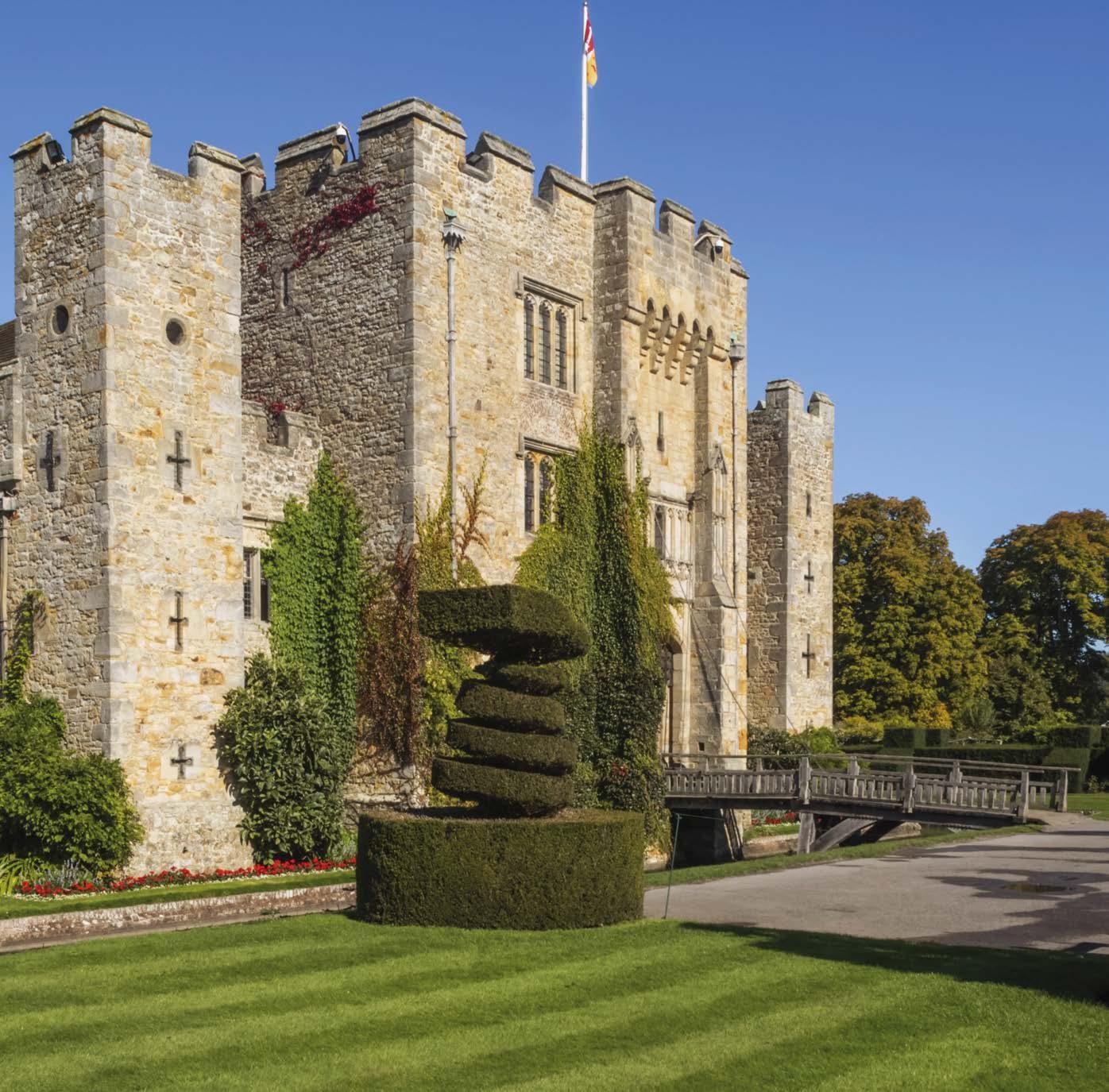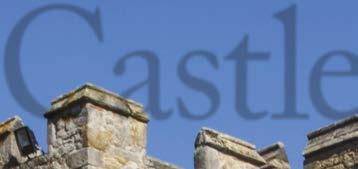




































With stunning scenery, grand stately homes and underground caverns, the Peak District is ripe for exploring



WORDS NATASHA FOGES







Back in those golden, pre-pandemic days, the team at Hever Castle, Kent, were gearing up for a grand 750th birthday. Just before baking the cake, however, they thought it might be a good idea to check a few facts. The guidebook had always said Hever was founded in 1270, but had anyone ever made certain of this? Historian and heritage expert Simon Thurley was appointed detective, charged with tracking down Hever’s true history, using charters dating back to Anglo Saxon times, artefacts, letters, deeds – and the castle itself. The results, at rst, seemed disappointing but he soon started nding the good stuff.
The rst confusion – the founding date – was quickly cleared up: there were once two castles called Hever within a mile of each other. Hever Brocas was, indeed, founded in 1271, but Hever Cobham, where today’s castle stands, wasn’t started until 1383, by John de Cobham. The party celebrations would have to go on hold.

As it turned out, everything went on hold anyway in 2020, but this unexpected hiatus did give Simon and the team longer to discover some truly groundbreaking stories.
There were two major threats in the 1380s: French invasion and domestic unrest. The Peasants’ Revolt erupted in 1381, just two years before what we now know was the construction date, making sense of Hever’s glorious double moat and no fewer than three portcullises, two of which are still in place. If an attacker managed to penetrate the rst portcullis, arrows would rain on their heads from murder-holes in the roof while they were trying to break down the second. “They are without doubt the best surviving timber defences in Europe,” says Simon.
Once past the defences, the castle is a square shape. The old guidebook tells us that only the castle’s frontage is ‘original’ and that the other three sides were added by the Boleyn family. Simon Thurley has made the happy
Previous spread: 13th-century Hever in Kent is one of England's most romantic castles This page, left to right: Originally the Great Kitchen in Tudor times , the castle's inner hall was redesigned in 1905; Hever's beautiful Wisteria Walk, which was added in the 1900s, blooms in the late spring and early summer

From towering, feather-topped wigs and embroidered frock-coats to ribbon-tied bonnets and empire-line gowns, the Georgian age arguably boasts some of the most iconic fashion trends in British history. Familiar right around the world thanks to globe-trotting portraits and block-busting period dramas, they make conjuring up a mental picture of the men and women of the era of Hogarth and Austen easy enough. But as two London exhibitions are set to show this spring, ri ing through Georgian wardrobes can tell us so much more about this colourful period and its people than simply what they looked like: the changing fashions provide us with a fascinating insight into everything from technological innovation and trade, to social change and current affairs.
Dress – and the fashionable silhouette – did, of course, change substantially in the hundred years or so between the accession of George I in 1714 and the death of his great-great-grandson, George IV, in 1830. Early Georgian women favoured opulent gowns draped over increasingly wide hooped petticoats, worn with stiff corsets; while the men wore extravagant full-skirted coats, heeled shoes and shoulder-length wigs.

By the early 1800s, however, the most stylish ladies were no longer marching from ballroom to opera box in the narrower, yet still heavily structured dresses of striped and brocaded silks that had held sway in the 1760s and 1770s, when they were complemented by the exaggeratedly elaborate hair-dos. Instead, they were gliding about in slim, plain, high-waisted muslin gowns inspired by the style of ancient Greece, paired with at slippers and natural curls. Often low-cut, near-transparent and prone to clinging to their bodies, the new dresses were




The site of some of the most momentous events in English history, Worcestershire also has rich royal connections and ancient manors to explore






 WORDS CATHERINE JONES
WORDS CATHERINE JONES


In the coronation year of Charles III, we find out how the role of the monarch has changed over the centuries – and how a modern-day king spends his working day WORDS NEIL JONES

